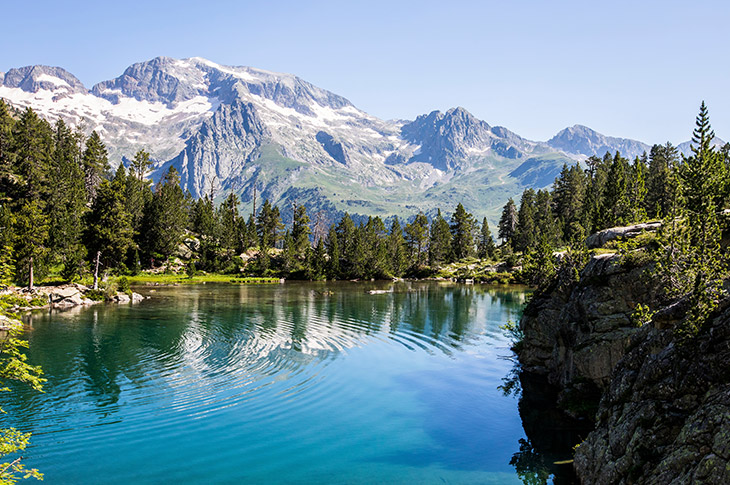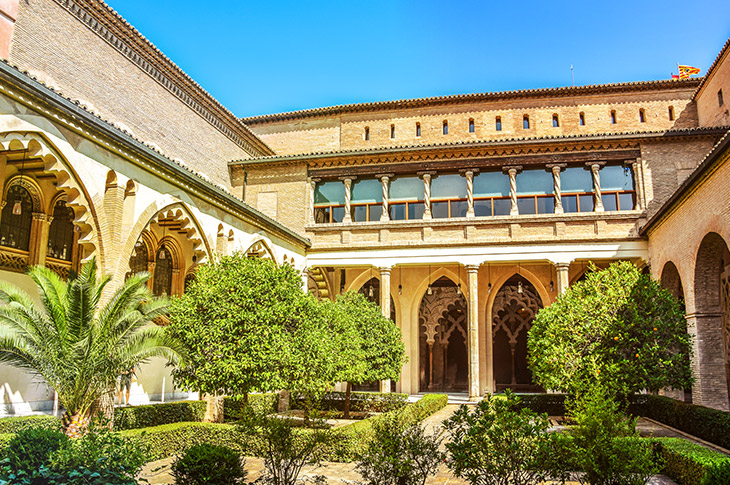Historical route through Aragon: following in the footsteps of the crown
Castles, monasteries, and Mudejar art on a journey through Aragonese heritage
From the ancient Pyrenean counties to the walled cities of the south, the Crown of Aragon Route presents a journey intertwining monumental heritage, high-mountain landscapes, and remnants of a medieval kingdom that shaped the history of the Iberian Peninsula. Along the way, tourists will discover Romanesque monasteries, Templar fortresses, episcopal centers, and protected natural sites that still retain the essence of what was a foundational era for both Aragon and Europe. The journey begins in the north, at sites such as the Monastery of Obarra, located in a valley of the Isábena River, and the Cathedral of Roda de Isábena, which still presents a crypt and some exceptional Romanesque pieces today, such as the chair of Saint Ramon. Not far away, the Tower of Abizanda, commissioned by Sancho III the Great in the 11th century, reveals the defensive and residential function of early medieval military architecture and bears witness to the consolidation of Christian power. This route ventures across landscapes of great natural value, such as the Posets-Maladeta Nature Park, home to the Pico Aneto and the last glaciers of the Aragonese Pyrenees, as well as the Forau de Aiguallut—a hydrogeological phenomenon visible along an accessible trail through the Llanos del Hospital. In Jaca, which was the kingdom’s first capital, visitors can admire one of the great Romanesque cathedrals of the Iberian Peninsula, alongside the Diocesan Museum and the Monastery of the Benedictines, which houses the sarcophagus of Sancha of Aragon.

In the Hoya de Huesca, the Monastery of San Juan de la Peña stands out as a real symbol of the dynasty, housing the first royal pantheon of Aragon and still preserving traces of the Holy Grail’s passage. In the city of Huesca, the Monastery of San Pedro el Viejo and the cathedral are fantastic spots to observe the evolution of local sacred art. Places such as Barbastro, Monzón, and the Monastery of Sigena link the surrounding area with the expansion of Christianity and the power of the nobility. The route also crosses urban hubs such as Zaragoza and Alcañiz, where Mudejar architecture and Islamic vestiges stand in dialogue with Christian constructions like the La Seo Cathedral or the former collegiate church of Santa María la Mayor. In Calatayud, Daroca, and the towns surrounding the Sierra de Armantes, outstanding examples of Mudejar art can be admired in churches, Jewish quarters, and on city walls.

The Gallocanta Lagoon Nature Reserve, one of Europe’s most unique ecosystems, and Teruel—with its cathedral, medieval cisterns, and Mudejar towers declared World Heritage Sites—round off a route that brings together history, landscape, and heritage from an Aragonese perspective.

